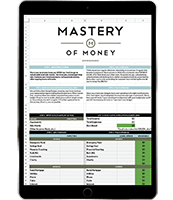According to USDebtClock.org, the amount of credit card debt outstanding in America as of this writing is $1,030,750,000,000. (If you struggle with the zeros, you’re not alone.)
That’s one trillion thirty billion seven hundred and fifty million dollars.
If we were to multiply that number by the national average interest rate of 16.41%, that means that on a monthly basis, Americans are paying $169,146,075,000 worth of interest every year. Almost $170 Billion dollars every year goes to pay interest on the items that have already been consumed, enjoyed, worn out, or thrown away. To put the number in perspective, Jeff Bezos, founder of Amazon.com will most likely hit that number in net worth by 2020.
According to creditcards.com, the average card that carries a balance month after month has $7,527 on it, with a national average of household credit card debt of $15,654 according to Nerdwallet’s annual study.
It’s time to negotiate a lower rate on credit cards
No matter how much debt you’re carrying on your credit card, or how much the interest is, it’s too much.
I learned this lesson the hard way right after college. Having graduated with over $8,000 in credit card debt (the majority of it spent at a place called Shagnasty’s), I found it difficult to even open the credit card statement every month. Facing my minimum payment became a challenge and I knew, deep down, I wasn’t getting anywhere on the payoff of the debt. The majority of my nearly $400 payment was going towards interest and literally $15 a month was going to principal.
When I read a book by John Commuta called Debt Free and Prosperous Living, things began to click for me. (John is a serial entrepreneur and is now helping people build their own banks through whole life insurance policies, a concept pioneered by a guy named R. Nelson Nash in his book Becoming Your Own Bank.) John wrote about not only getting rid of the debt that’s causing the interest, but getting rid of the interest too. He suggested calling the credit card companies and simply asking them to lower the rates they were charging.
When I first read this advice, my skeptical side kicked in and said, “why on earth would a credit card company reduce the amount of interest they’re charging on an account?”
After digging in and understanding how these credit card companies work, I developed a strategy that started generating results. In my half a dozen phone calls to various credit card companies, I found out that there’s something called the retention department and their sole job is to retain the accounts that are currently on the books. Retaining accounts could mean keeping a client that’s considering doing a balance transfer AND keeping clients paying that may be on the verge of not paying anymore.
Everyone’s empowered to say no. Only a few are empowered to say yes.
After figuring out that I had to ask to speak to someone in the retention department, I then had to realize that the first, second and possibly third person I spoke to didn’t have the authority to grant me what I was requesting. And so, everytime I encountered someone who told me no, I thanked them for their time and asked to speak to their manager. My assumption was that they probably weren’t empowered to say yes in the first place, so I better go up the food chain. The key to this working was to always remain pleasant, courteous, and explain my situation in full. (The script I used is available HERE…)
Out of 6 cards that I was holding at the time, 5 of them reduced my interest rate to below 5% from the interest rates I had been paying which were between 19-26%. Conservatively, I ended up saving over $1200 a year in interest, or at least $100 a month. Now, instead of only $15 going towards principal, I was applying significantly more to my payoff every month.
Why NOW is the time to negotiate lower rates on credit cards
As of this writing in early 2018, there is a significant amount of toxic debt in the economy. The amount of credit card debt, subprime auto loan debt, and unsecured other debt in our country is at record highs. In fact, New York magazine recently ran an article called Americans Haven’t Been This Poor and Indebted in Decades. The author, Eric Levitz, referencing a Deutsch bank infographic about the abysmally low amount of savings/net worth in relation to debt says:
So, this is what a “good” economy now looks like in the United States: shrinking household wealth; soaring middle-class debt; wage growth that can’t keep pace with the rising costs of housing, health care, and higher education; job growth concentrated in part-time positions; widespread retirement insecurity; and more wealth-less households than America has seen for 56 years.
This is the reason NOW is the time to negotiate lower rates on cards. Credit card companies like Capital One and Discover have extended a massive amount of unsecured credit to individuals and households that are struggling to make ends meet. One investment newsletter I subscribe to suggested to short Capital One as their client mix is similar to what took down the mortgage market in 2007 — lots of overleveraged folks who’ve acquired way more debt than they can service. For the first several million account holders who call in and state their challenges, commit to paying, but only if the interest rate is lowered, these credit card companies will more than likely acquiesce to lower rates.
If you’re interested in the script I used to get credit card rates lower, enter your information below and get to calling! Remember that not everyone has the power to say yes, but everyone has the power to say no. Get to the right people by constantly going up the food chain. And don’t take NO for an answer!




